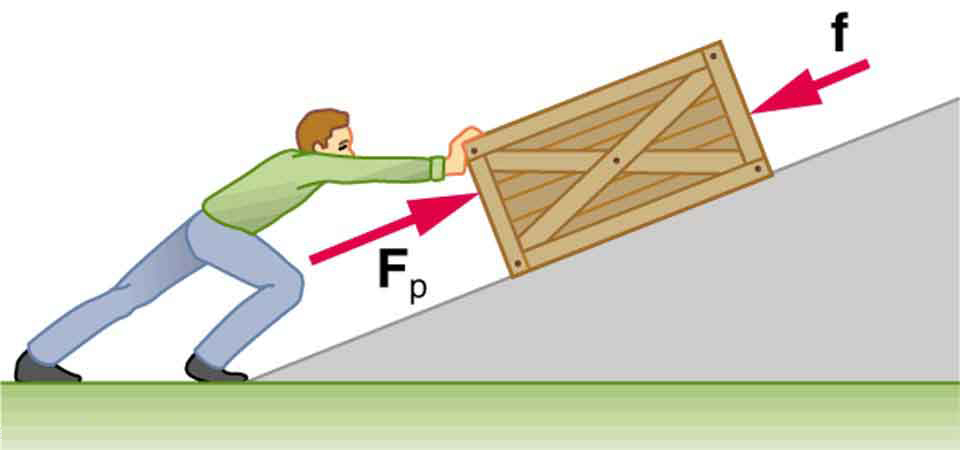| << Chapter < Page | Chapter >> Page > |
Now let us consider what form the work-energy theorem takes when both conservative and nonconservative forces act. We will see that the work done by nonconservative forces equals the change in the mechanical energy of a system. As noted in Kinetic Energy and the Work-Energy Theorem , the work-energy theorem states that the net work on a system equals the change in its kinetic energy, or . The net work is the sum of the work by nonconservative forces plus the work by conservative forces. That is,
so that
where is the total work done by all nonconservative forces and is the total work done by all conservative forces.

Consider [link] , in which a person pushes a crate up a ramp and is opposed by friction. As in the previous section, we note that work done by a conservative force comes from a loss of gravitational potential energy, so that . Substituting this equation into the previous one and solving for gives
This equation means that the total mechanical energy changes by exactly the amount of work done by nonconservative forces. In [link] , this is the work done by the person minus the work done by friction. So even if energy is not conserved for the system of interest (such as the crate), we know that an equal amount of work was done to cause the change in total mechanical energy.
We rearrange to obtain
This means that the amount of work done by nonconservative forces adds to the mechanical energy of a system. If is positive, then mechanical energy is increased, such as when the person pushes the crate up the ramp in [link] . If is negative, then mechanical energy is decreased, such as when the rock hits the ground in [link] (b). If is zero, then mechanical energy is conserved, and nonconservative forces are balanced. For example, when you push a lawn mower at constant speed on level ground, your work done is removed by the work of friction, and the mower has a constant energy.
When no change in potential energy occurs, applying amounts to applying the work-energy theorem by setting the change in kinetic energy to be equal to the net work done on the system, which in the most general case includes both conservative and nonconservative forces. But when seeking instead to find a change in total mechanical energy in situations that involve changes in both potential and kinetic energy, the previous equation says that you can start by finding the change in mechanical energy that would have resulted from just the conservative forces, including the potential energy changes, and add to it the work done, with the proper sign, by any nonconservative forces involved.

Notification Switch
Would you like to follow the 'College physics for ap® courses' conversation and receive update notifications?